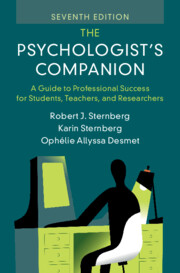Refine search
Actions for selected content:
279809 results

Introduction to Conservation Genetics and Genomics
- Coming soon
-
- Expected online publication date:
- August 2026
- Print publication:
- 31 August 2026
-
- Textbook
- Export citation
The Cambridge History of War and Society in America
- Coming soon
-
- Expected online publication date:
- July 2026
- Print publication:
- 31 July 2026
-
- Book
- Export citation
The Psychology of Hunger and Starvation
- Coming soon
-
- Expected online publication date:
- June 2026
- Print publication:
- 30 June 2026
-
- Book
- Export citation
Gender and Elections
- Shaping the Future of American Politics
- Coming soon
-
- Expected online publication date:
- June 2026
- Print publication:
- 30 June 2026
-
- Textbook
- Export citation
Settlement and Risk Assessment in International Commercial Arbitration
- Coming soon
-
- Expected online publication date:
- June 2026
- Print publication:
- 30 June 2026
-
- Book
- Export citation

The Shrikhande Graph
- A Window on Discrete Mathematics
- Coming soon
-
- Expected online publication date:
- May 2026
- Print publication:
- 31 May 2026
-
- Book
- Export citation
The Making of the Dominican Liturgy and Its Chant
- Coming soon
-
- Expected online publication date:
- May 2026
- Print publication:
- 31 May 2026
-
- Book
- Export citation
Dynamic Universities
- How Strategic, Entrepreneurial Leaders Can Strengthen Higher Education
- Coming soon
-
- Expected online publication date:
- May 2026
- Print publication:
- 31 May 2026
-
- Book
- Export citation

How to Critically Read the Scientific Research Literature
- Introducing the CERIC Method
- Coming soon
-
- Expected online publication date:
- May 2026
- Print publication:
- 31 May 2026
-
- Book
- Export citation
The Cambridge Handbook of Natural Linguistics
- Coming soon
-
- Expected online publication date:
- May 2026
- Print publication:
- 31 May 2026
-
- Book
- Export citation

Cognitive Psychology
- Coming soon
-
- Expected online publication date:
- May 2026
- Print publication:
- 31 May 2026
-
- Textbook
- Export citation

Relative Clauses in Proto-Indo-European
- A Study in Syntactic Reconstruction
- Coming soon
-
- Expected online publication date:
- April 2026
- Print publication:
- 30 April 2026
-
- Book
- Export citation
Kleinman's Diagnostic Imaging of Child Abuse
- Coming soon
-
- Expected online publication date:
- April 2026
- Print publication:
- 30 April 2026
-
- Book
- Export citation
The Cambridge Handbook of AI in Civil Dispute Resolution
- Coming soon
-
- Expected online publication date:
- April 2026
- Print publication:
- 30 April 2026
-
- Book
- Export citation

The Inner Life of Politics
- Grassroots Activism in West Germany, 1962–1983
- Coming soon
-
- Expected online publication date:
- April 2026
- Print publication:
- 30 April 2026
-
- Book
- Export citation
Design Your Future
- The Innovative Career and Transition Guide
- Coming soon
-
- Expected online publication date:
- April 2026
- Print publication:
- 30 April 2026
-
- Book
- Export citation

The Psychologist's Companion
- A Guide to Professional Success for Students, Teachers, and Researchers
- Coming soon
-
- Expected online publication date:
- March 2026
- Print publication:
- 31 March 2026
-
- Book
- Export citation

A Practical Guide to Time Series Analysis
- Coming soon
-
- Expected online publication date:
- March 2026
- Print publication:
- 31 March 2026
-
- Book
- Export citation

The Environmental Knowledge Commons
- Cases and Lessons for Knowledge Sharing
- Coming soon
-
- Expected online publication date:
- March 2026
- Print publication:
- 31 March 2026
-
- Book
- Export citation

Making Protest
- The Role of Protest Brokers in South Africa's Urban Landscape
- Coming soon
-
- Expected online publication date:
- March 2026
- Print publication:
- 31 March 2026
-
- Book
- Export citation
